Mastering market analysis with RSI and Bollinger Bands involves utilizing these technical indicators to enhance trading strategies. RSI identifies overbought and oversold conditions, aiding in understanding price momentum. Bollinger Bands monitor volatility and pinpoint potential market reversals. By combining RSI and Bollinger Bands, traders can assess the strength and sustainability of price movements. Customizing settings and adapting to market conditions is vital for accuracy. Strategies like utilizing RSI divergence and confirming signals with complementary indicators are beneficial. Understanding the limitations and considerations when using these indicators is essential for effective analysis. Enhance your market analysis with in-depth insights on RSI and Bollinger Bands.
Understanding Relative Strength Index (RSI)
In the world of market analysis, the Relative Strength Index (RSI) stands as a pivotal tool for evaluating the speed and magnitude of price fluctuations within a specified period. Developed by J. Welles Wilder in 1978, RSI is a widely-used momentum oscillator that measures the speed and change of price movements on a scale of 0 to 100. Traders often rely on RSI to identify overbought and oversold market conditions, with values above 70 indicating overbought situations and values below 30 suggesting oversold conditions. By calculating RSI over a typical period of 14 days, market participants can gain insights into potential trend confirmations and reversals.
Moreover, the Relative Strength Index (RSI) is frequently utilized in conjunction with other technical indicators such as Bollinger Bands to enhance market analysis. By combining RSI with Bollinger Bands, traders can refine their understanding of market conditions and improve their ability to make informed trading decisions based on robust analytical insights.
Key Components of RSI Indicator
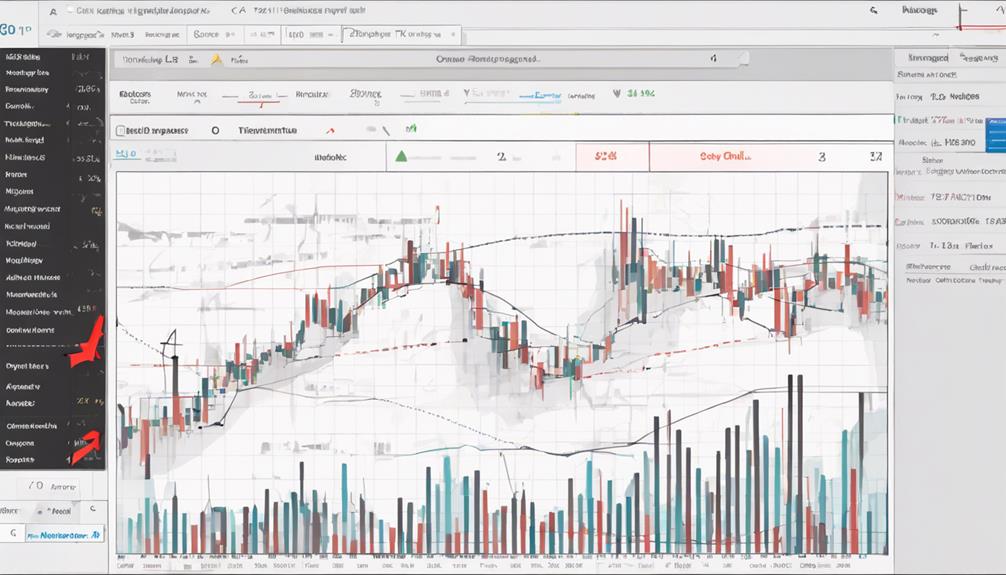
An essential element of the RSI indicator lies in its ability to quantify the speed and magnitude of price movements within financial markets. This momentum oscillator, developed by J. Welles Wilder in 1978, plays a vital role in analyzing market trends.
Here are key components of the RSI indicator:
- Measuring Overbought and Oversold Conditions: RSI values range from 0 to 100, with readings above 70 suggesting overbought conditions and values below 30 indicating oversold conditions. This feature helps traders identify potential reversal points in the market.
- Calculation Method: The RSI is calculated based on the average gain divided by the average loss over a specified period. This mathematical formula allows traders to assess the strength of price movements accurately.
- Historical Significance: Since its introduction, the RSI has become a widely-used tool for traders and analysts to gauge the momentum of price movements. Its ability to indicate overbought and oversold conditions has made it an indispensable part of technical analysis in financial markets.
Customizing RSI Settings for Precision

Customizing RSI settings allows traders to tailor the indicator's parameters for enhanced precision in analyzing market dynamics. By adjusting the period length, traders can control the sensitivity of the RSI indicator to price changes. Changing the overbought and oversold levels can fine-tune signals for specific assets or timeframes, providing more accurate entry and exit points. Additionally, tweaking the smoothing factors of the RSI can help reduce noise and offer clearer trend indications, aiding traders in making more informed decisions. Personalizing RSI settings based on individual trading styles and strategies is important for enhancing the accuracy of market analysis.
| RSI Settings | Impact | Importance |
|---|---|---|
| Period Length | Affects responsiveness to price changes | High |
| Overbought Levels | Fine-tunes signals for specific assets/timeframes | Medium |
| Smoothing Factors | Reduces noise for clearer trend indications | High |
Implementing RSI and Bollinger Bands Together
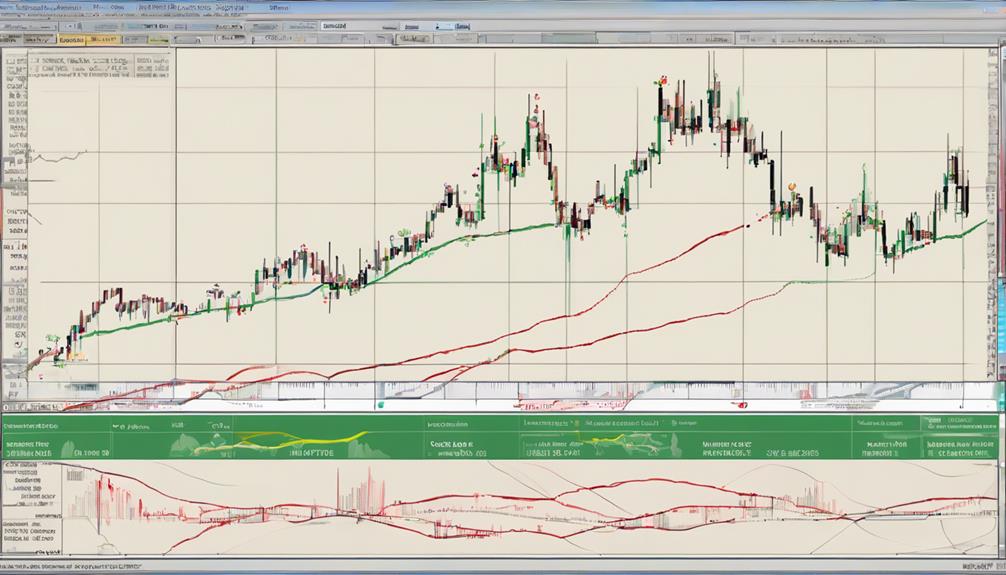
Utilizing both the Relative Strength Index (RSI) and Bollinger Bands concurrently offers a thorough approach to analyzing market dynamics by combining measures of price momentum and volatility.
When implementing RSI and Bollinger Bands together in a trading strategy, several key points should be considered:
- Identifying Potential Market Reversals: The combination of RSI and Bollinger Bands can help traders pinpoint potential market reversals more effectively. For instance, when the upper Bollinger Band touches coincide with RSI values indicating overbought conditions, it may signal a possible reversal to the downside.
- Monitoring Price Volatility: Bollinger Bands expanding around the price chart indicate increased price volatility. When this expansion aligns with RSI levels, traders can better assess the strength and sustainability of a price move, aiding in decision-making processes.
- Enhancing Market Analysis: Integrating RSI and Bollinger Bands provides a thorough view of market conditions, offering insights into both price momentum and volatility. This combined analysis can assist traders in making more informed trading decisions based on a deeper understanding of market dynamics.
Strategies for RSI and Bollinger Bands
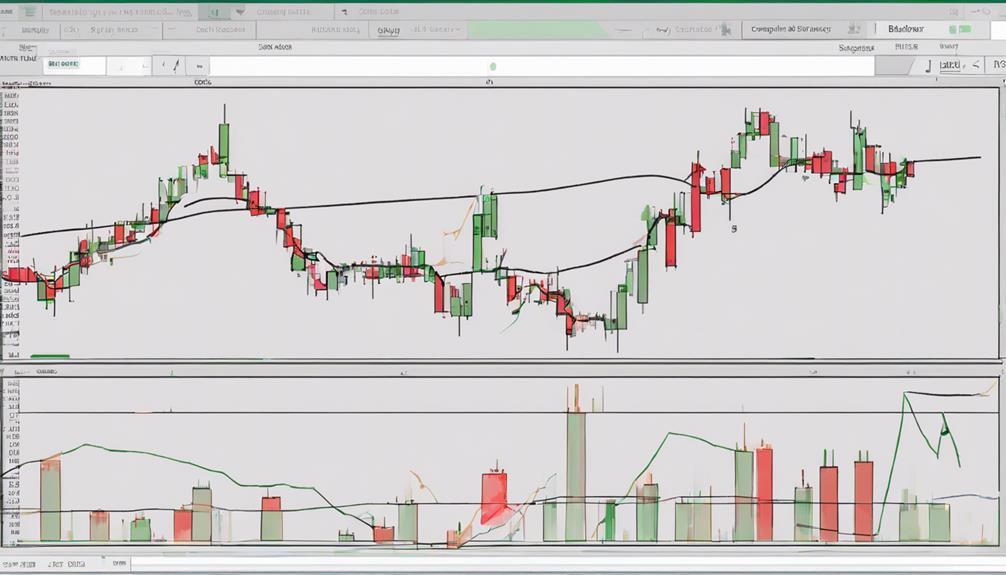
Analyzing RSI overbought conditions alongside Bollinger Bands squeeze and interpreting divergence signals are essential strategies for traders looking to make informed decisions. These indicators provide valuable insights into potential market reversals, volatility shifts, and entry/exit points.
Understanding how to effectively utilize these signals can greatly enhance trading strategies and overall market analysis.
RSI Overbought Conditions
RSI values above 70 serve as reliable indicators of overbought market conditions, signaling potential price reversals to traders employing strategies that combine RSI with Bollinger Bands for enhanced reversal signals.
When dealing with RSI overbought levels, traders often look for RSI divergence to confirm the strength of the signal. Understanding these overbought conditions is essential for making effective trading decisions.
Bollinger Bands Squeeze
The Bollinger Bands Squeeze phenomenon, characterized by contracting bands reflecting low volatility levels, often heralds imminent significant price movements in the market. Traders utilize this period to anticipate potential volatility expansions and identify entry points for trades.
Combining the Bollinger Bands Squeeze with RSI can offer enhanced signals for potential reversals or breakouts. As the bands contract, indicating a period of reduced price fluctuations, traders brace for an impending increase in volatility, preparing for potential profitable opportunities.
Understanding the dynamics of the Bollinger Bands Squeeze and its correlation with RSI can provide traders with valuable insights into market conditions and aid in making informed trading decisions when volatility is on the horizon.
Divergence Signals Interpretation
Utilizing divergence signals in conjunction with RSI and Bollinger Bands can provide traders with valuable insights into potential trend reversals in the market. When interpreting these signals, traders should consider the following:
- Bullish Divergence: Occurs when price makes lower lows while RSI forms higher lows, indicating a possible trend reversal to the upside.
- Bearish Divergence: Happens when price makes higher highs while RSI forms lower highs, suggesting a potential trend reversal to the downside.
- Confirmation: It is essential to confirm divergence signals with other technical indicators for increased accuracy in predicting market turning points. By analyzing divergence signals in RSI and Bollinger Bands, traders can better anticipate and capitalize on potential market movements.
Example Scanners and Strategies
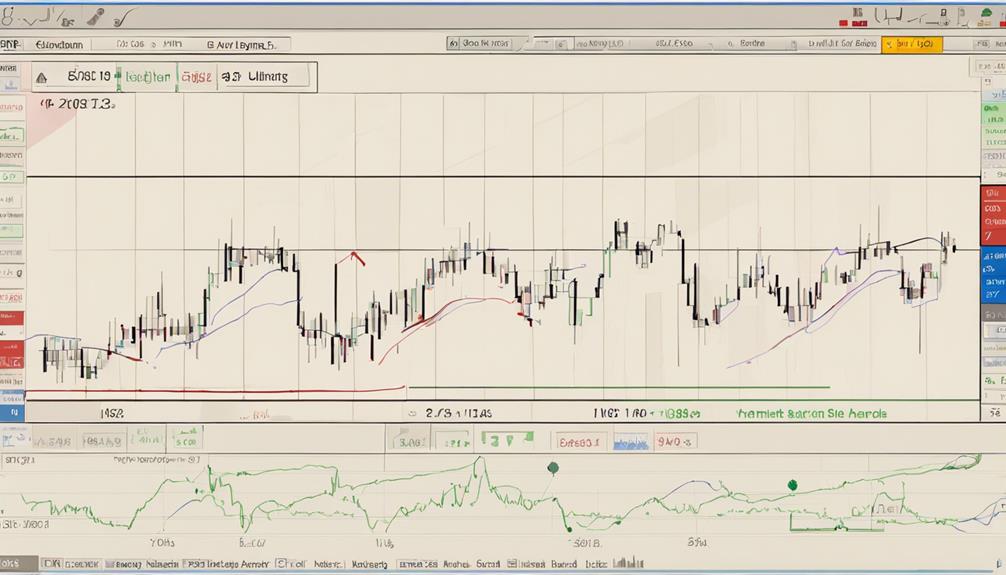
Efficiently employing example scanners in market analysis can enhance traders' ability to pinpoint potential trading opportunities with precision. By utilizing example scanners that are programmed to filter stocks based on criteria such as RSI with Bollinger Bands, traders can automate the process of identifying potential trades that align with their trading strategy.
These scanners can be customized to send alerts and notifications, enabling traders to stay informed about market movements and timely trade executions. Strategies incorporating example scanners allow traders to make more informed decisions by providing them with a systematic approach to analyzing the market and identifying trade setups.
In this way, example scanners not only save time but also assist traders in maneuvering the complexities of the market with greater efficiency and effectiveness. By leveraging example scanners in conjunction with indicators like Bollinger Bands and RSI, traders can enhance their market analysis capabilities and improve their overall trading performance.
Tips for Incorporating RSI and Bollinger Bands
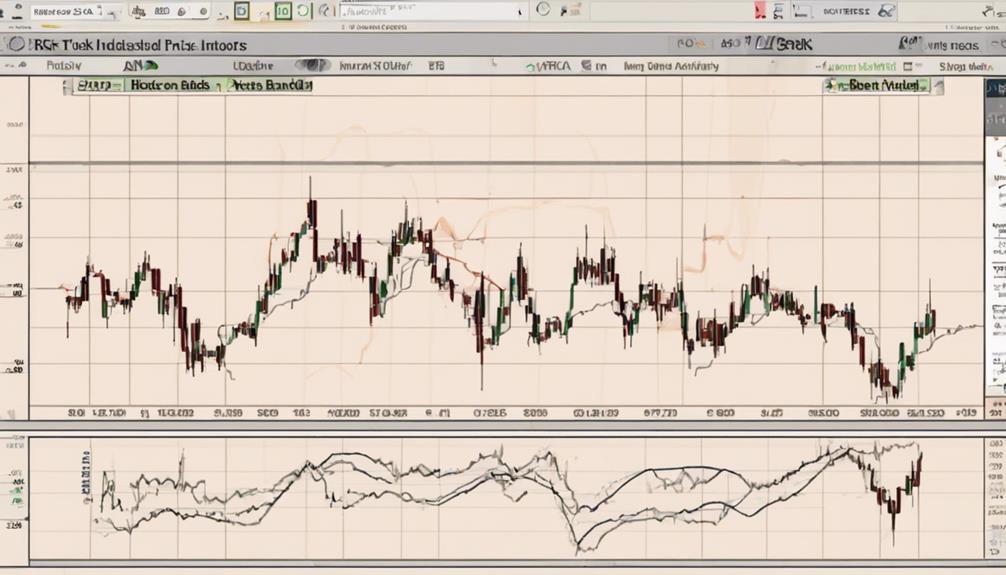
When incorporating RSI and Bollinger Bands into market analysis, traders can gain valuable insights into price momentum and trend dynamics. To effectively integrate these tools into a trading strategy, consider the following tips:
- Utilize RSI values for Overbought and Oversold Signals: Keep a close eye on RSI values above 70, which typically indicate overbought conditions, suggesting a potential reversal or correction in price. Conversely, RSI values below 30 signal oversold conditions, hinting at a possible buying opportunity.
- Combine RSI and Bollinger Bands for Confirmation: When RSI signals align with Bollinger Bands' indications, it can provide stronger confirmation for trade decisions. For instance, if RSI shows overbought conditions while the price touches the upper Bollinger Band, it may reinforce a sell signal.
- Analyze Price Momentum with Bollinger Bands: Bollinger Bands' width can offer insights into price volatility and momentum. A narrowing band may indicate a period of consolidation, while an expanding band could signal increasing volatility and potential trend continuation.
Limitations and Considerations
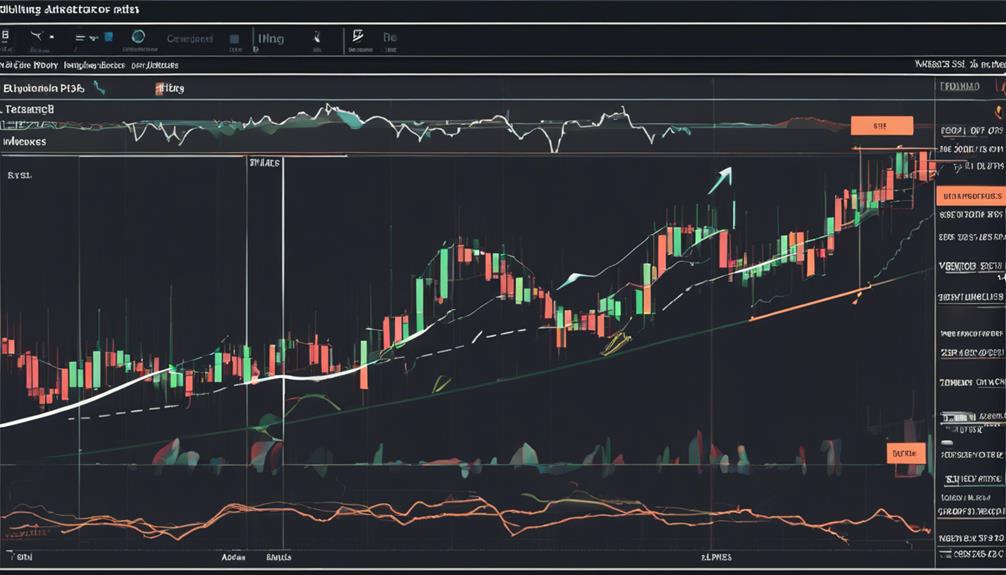
In analyzing market trends using RSI and Bollinger Bands, it is essential to acknowledge limitations and considerations. Challenges in RSI accuracy, diverse interpretations of Bollinger Bands, and the impact of market volatility are vital aspects to evaluate.
Understanding these points can enhance the effectiveness of incorporating RSI and Bollinger Bands into trading strategies.
RSI Accuracy Challenges
Understanding the complexities of RSI accuracy involves a nuanced grasp of its limitations and considerations in various market conditions. When delving into RSI analysis, traders encounter challenges that can impact the accuracy of their assessments:
- Market Conditions: RSI accuracy can vary greatly depending on whether the market is trending strongly or moving sideways in a range-bound fashion.
- Timeframes and Settings: The choice of RSI timeframe and settings is essential for achieving accurate signals and avoiding misinterpretations.
- False Signals: Choppy or low-volume market conditions can lead RSI to generate false signals, necessitating caution and additional confirmation from complementary indicators.
Bollinger Bands Interpretation
Utilizing Bollinger Bands for market analysis demands a vital awareness of their limitations and key considerations to navigate potential pitfalls effectively. Bollinger Bands, being reliant on volatility, can generate false signals in ranging markets, necessitating confirmation with other indicators to avoid erroneous breakouts.
In low volatility environments, Bollinger Bands may prove less effective, resulting in whipsaw trades. Adapting the parameters of Bollinger Bands continually can assist in aligning with evolving market conditions.
Enhancing signal accuracy and reliability can be achieved by combining Bollinger Bands with trend-following indicators, thereby improving the technical analysis process in trading scenarios. It is essential for traders to recognize these limitations and considerations to optimize the utility of Bollinger Bands in their market analysis strategies.
Market Volatility Impacts
Market volatility's impact on Bollinger Bands is a crucial factor influencing the reliability of market analysis and the identification of potential trading signals. When market volatility increases, Bollinger Bands tend to expand, indicating higher price variability. This expansion can lead to more frequent touches of the bands, potentially generating false signals for traders. To navigate these challenges, traders should consider the following:
- Understanding Bollinger Bands Behavior: During high market volatility, Bollinger Bands may widen notably, requiring traders to adjust their interpretation accordingly.
- Confirmation with Other Indicators: Given the potential for false signals during volatile periods, it is essential to corroborate Bollinger Bands signals with other technical indicators for increased reliability.
- Adaptation to Changing Conditions: Traders should be prepared to adapt their strategies and risk management approaches when market volatility distorts Bollinger Bands signals.
Frequently Asked Questions
How Do You Use Bollinger Bands and RSI Together?
When combining Bollinger Bands and RSI, traders can identify potential market extremes and reversal points.
RSI divergence confirms overbought conditions indicated by Bollinger Bands.
Bollinger squeeze and RSI together provide insight into potential price reversals.
The combination also aids in trend confirmation and can signal volatility changes in the market.
Utilizing upper and lower Bollinger Band touches along with RSI readings can offer valuable trading signals for investors.
Which Is Better, RSI or Bollinger Bands?
In comparing RSI and Bollinger Bands, it is important to understand their distinct purposes. RSI primarily focuses on momentum, indicating overbought or oversold conditions. On the other hand, Bollinger Bands are more oriented towards measuring volatility, especially during squeeze patterns.
Traders often use RSI for divergence signals, while Bollinger Bands serve as a tool for analyzing price volatility around a moving average. Both indicators offer valuable insights, but their effectiveness depends on the specific market conditions and trading strategies employed.
Which Indicator Is Best for Combine With Bollinger Bands?
When combining Bollinger Bands with other indicators, such as MACD, SMA crossover, Fibonacci retracement, Stochastic oscillator, moving averages, and candlestick patterns, the choice depends on the specific trading strategy and market conditions.
Each indicator offers unique insights into price movements and market trends, enhancing the overall analysis.
Traders should consider experimenting with different combinations to determine which setup aligns best with their trading objectives and risk tolerance levels.
What Is the Best Indicator to Pair With Rsi?
When considering the best indicator to pair with RSI for thorough market analysis, analysts often look to the MACD. The MACD offers insights into trend strength and potential crossovers, complementing RSI's momentum readings.
Additionally, incorporating the Stochastic oscillator can enhance signal confirmation. Moving averages provide further trend analysis, while volume analysis offers insights into market participation.
Fibonacci retracement and price action analysis can further enrich the analysis for well-rounded trading decisions.
Conclusion
To sum up, mastering market analysis with RSI and Bollinger Bands requires a deep understanding of these indicators and their application in trading strategies.
Customizing RSI settings and combining it with Bollinger Bands can provide valuable insights into market trends.
While these tools can be powerful, it is vital to take into account their limitations and use them in conjunction with other analysis methods for a well-rounded approach.
Keep in mind, in the world of trading, even the most precise strategies can sometimes lead to unexpected outcomes.


